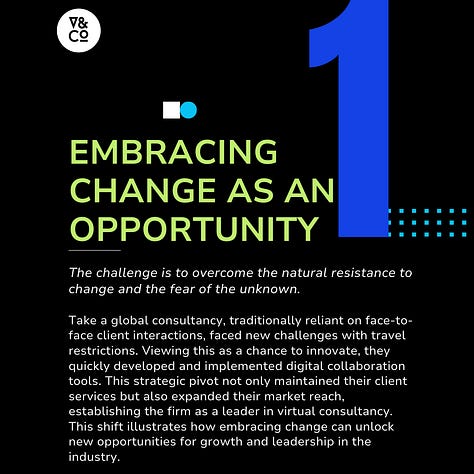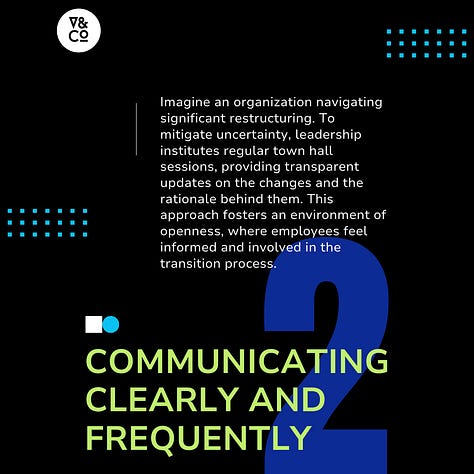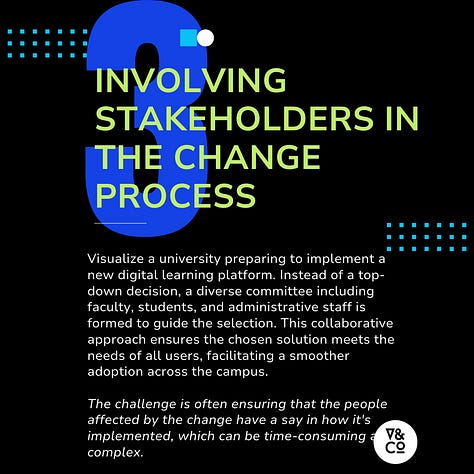Racing to excellence: Navigating leadership with 'Drive to Survive
Unpacking the high-speed lessons of Teamwork, Pressure, and Adaptability on and off the Track
Welcome Back to the fast lane of Leadership Insights!
Fresh from a two-week hiatus, where disconnection was the theme, I've returned energized and ready to dive back into the world of leadership lessons. While the serenity of my break tempted me to explore the power of slowing down, my recent binge of "Drive to Survive" on Netflix steered me toward the dynamic, high-pressure realm of Formula 1 leadership. However, keep your engines running for a potential exploration into Mental Health in our next issue, a topic I've been keenly reflecting on.
Having been inspired by sports from a young age, I've always found the athletic world a fertile ground for learning about leadership. Tennis, in particular, taught me invaluable lessons about resilience and focus through the guidance of my coach and father. This experience has been a cornerstone in my personal and professional growth, highlighting the profound impact of sports on developing leadership skills.
🌟 5 Key Takeaways from this newsletter
Teamwork is key, even in solo scenarios 🤝: Despite Formula 1 drivers being alone in their cars, the sport is a profound example of teamwork.
Thriving under pressure 💪: The ability to make split-second decisions under high pressure is a hallmark of effective leadership.
The importance of team dynamics 🔄: Communication, respect, and mutual support within a team are crucial for success.
Adapting to change is non-negotiable 🌿: Formula 1's constant evolution mirrors the business world's need for adaptability and innovation. Leaders must embrace change, encourage creativity, and be willing to pivot strategies to stay competitive.
Open communication fosters alignment and trust 🗣️: Keeping lines of communication open, especially during times of change, is essential for alignment and building trust within a team. Sharing even incomplete updates can help ease anxiety and ensure everyone is on the same page.
Leadership Lessons from "Drive to Survive"
Netflix's "Drive to Survive" has not only brought Formula 1 racing into our living rooms but has also inadvertently shone a spotlight on the dynamic and high-pressure world of leadership within the sport. I have been amazed to discover the critical roles of team principals, tensions between drivers of a same team and how much it’s actually a team sport despite drivers beeing alone in their car. The tradition of drivers thanking their team at the end of each race underlines this beautifully. This week, we delve into the management, adaptability, and resilience lessons from the series that extend far beyond the racetrack.
Leadership under pressure
Talk about managing pressure when you are on the track alone in your car getting a couple G each tour! Drivers are often under immense pressure to make split-second decisions that could either lead to spectacular victory or heartbreaking defeat. The series showcases several instances where team principals had to navigate through the complexities of race strategies, driver management, and team morale—all under the watchful eyes of the world.
Effective leaders thrive under pressure, not by avoiding it. They make informed decisions quickly, communicate clearly, and maintain their composure, setting a tone of confidence and resilience for their team.
Team Dynamics
"Drive to Survive" delves deep into the relationships within teams, highlighting the pivotal role of communication, respect, and mutual support in achieving collective success. The interplay between drivers, each with their own ambitions and personalities, against the backdrop of a united team goal, provides rich examples of how leadership can either forge a strong, cohesive unit or allow cracks to appear.
Consider a team principal's decision to have one driver defend to aid another team member's victory. This scenario underscores the balance between individual competition and team success, highlighting the importance of a clear vision and collective goals.
It’s too easy to think about this in the corporate context, like asking one department, such as recruiting, to prioritize critical roles like engineering over others temporarily. Per experience, such decisions often lead to tensions when the broader vision isn't adequately communicated or understood. The key to effective change management and decision-making, especially under pressure, is alignment. Ensuring your leadership team is unified and communicates the "why" behind decisions can significantly enhance efficiency, productivity, and overall morale.
Building a successful team requires more than just assembling talent; it necessitates fostering an environment where open communication, trust, and shared goals are paramount. Leaders must navigate individual egos and ambitions to ensure they align with the team's objectives.
Adapting to Change
Formula 1, a sport celebrated for its relentless pursuit of innovation and excellence, embodies the very essence of adaptability. Teams face a continuous cycle of regulatory shifts, technological advancements, and evolving competition dynamics, making adaptability not just a skill but a core component of their DNA. "Drive to Survive" offers viewers a front-row seat to the strategic pivoting and innovation that enable teams to either forge ahead or play catch-up in this ever-changing landscape.
Change, although a constant in both life and business, often presents itself as a formidable challenge. Recent years have underscored this reality, introducing global pandemics, significant career shifts, leadership changes, and the profound personal impacts of these events. Such periods can test even the most experienced leaders, inducing feelings of grief, overwhelm, and isolation.
In my journey as a leader, maintaining open and transparent communication during times of change has been instrumental. The challenge lies in ensuring clear and consistent communication, even when the full picture remains unclear or the details are not fully disclosed. An approach I've found effective is to share the situation's essence, admitting when the update is partial or evolving: "I have an incomplete update or picture to share," thereby fostering a culture of trust and alignment.
In the fast-paced and often unpredictable business environment, adaptability and innovation emerge as crucial leadership traits. Leaders who embrace change, foster creativity, and are ready to pivot strategies can navigate their teams through uncertainty, ensuring not just survival but sustained competitiveness and relevance.
While "Drive to Survive" entertains with its high-speed drama and behind-the-scenes access, it also serves as a masterclass in leadership. The high stakes, the intense competition, and the ever-present pressure cooker of public scrutiny provide a backdrop against which lessons of resilience, team dynamics, and adaptability play out. These lessons, as demonstrated by the teams and individuals in the fast lane of Formula 1, are universally applicable, offering valuable insights for leaders in all fields striving for peak performance and team cohesion in their endeavors.
🛠️More detailed guidance on navigating change🛠️






📣 Connect with me
If you have any thoughts, questions, or insights you’d like to share, please feel free to reach out to me on LinkedIn. I’d love to hear from you!
Feel free to go check my website if you are interested for us to partner together or if you want to get further insights go to my newsletter.
🙏 Thank you for spending part of your week with me. Stay strong, lead with curiosity & compassion, and until next time, take care.






